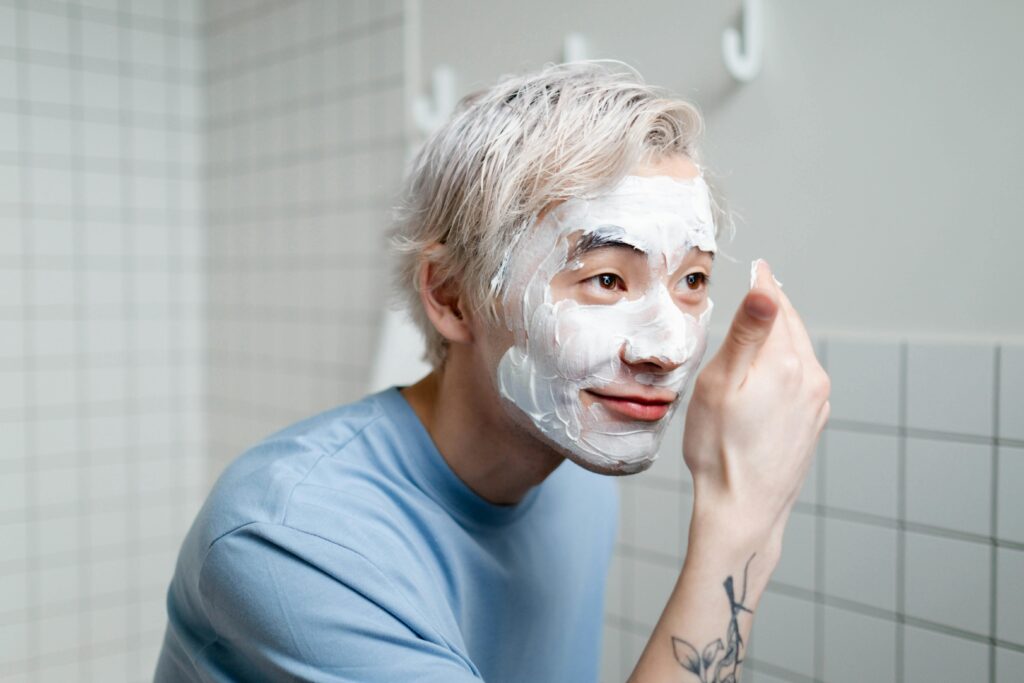Things You Didn’t Know About Pimples On Inner Thighs Female

Body acne is a widespread skin issue that affects a large number of individuals. Acne affects 93.3% of persons aged 16 to 18, whereas worldwide research suggests it affects 85% of those aged 12 to 24. It is believed that almost half of those who have acne also have outbreaks on their back, and approximately 15% have breakouts on their breast. Pimples on inner thighs and legs is also frequent. Based on the red lumps and raised bumps that form on your thighs, around your groin, or lower legs, you can treat them like you would treat face acne. However, in certain circumstances, what seems to be a pimple on your leg might be another ailment that needs a different therapy.
Is Having Pimples On Your Legs Regular?
Everybody and any body area with hair follicles and oil glands may get pimples. Although leg pimples are prevalent, they are a different kind of acne than you might get on your back, arm, chest, or face. Acne vulgaris is the medical name for outbreaks in certain body areas. Since it’s the most common skin condition that generates pimples, it’s also called common acne. This form of acne is characterized by an overproduction of oil in the skin. The oil, also known as sebum, goes from the oil gland to the skin’s surface through the hair follicle.
Too much oil may block pores by clumping with sweat and dead skin cells. Whenever clogged pores get infected, they swell and transform into red, swollen acne pimples. Acne vulgaris is often restricted to the face, back, and chest since these areas of your body have the most oil glands. However, it may occur elsewhere. Pimples on your leg are most likely cause by acne mechanica or acne inversa, which have distinct origins from ordinary acne.
What Is the Reason for Pimples On Your Legs?
Acne mechanica is the first possible cause of pimples on your legs. This form of acne is cause by anything rubbing, squeezing, or applying pressure to the skin or by something restricting your skin from air exposure. Acne mechanica appears as little red lumps on the skin, similar to acne. While it might be aggravating, it seldom progresses to severe acne. Acne inversa is another skin ailment that may develop tiny pimples on your legs.
Abscesses, commonly around sweat glands, characterize this persistent skin disorder. Abscesses are pus-filled lumps that form as a result of clogged hair follicles. Smoking, obesity, family history, and other chronic illnesses and skin disorders or certain drugs are also risk factors for acne inversa. The precise etiology of acne inversa is unknown.
Why Does Acne Appear Here?
Wearing non-breathable clothes when working out or playing sports is one typical situation that skin specialists perceive as a reason for acne between the legs or on the back of the pimples on inner thighs. Oil clogs and sweats your pores in this location due to the non-porous material and the additional heat and friction that builds up when exercising.
Acne mechanica is typically encounter by physically active people, especially athletes and soldiers, who must wear appropriate equipment and uniforms. What are pimples on inner thighs and around the groin in the case of acne? Inversa may be abscesses. They may happen here because some of your sweat glands are position here.
Moreover, because sweat glands are located near your breasts and armpits, acne inversa may also develop in these areas. This illness may affect both genders, albeit it affects more women than men.
Is It Folliculitis Or Acne?
When you have leg breakouts that don’t sound like acne inversa or acne mechanica, it might be folliculitis rather than acne. The holes in your skin from which your hair develops are hair follicles. Folliculitis occurs when the hair follicles inflamed, creating little red, yellow, or white pimples. These pus-filled blisters might rupture, resulting in crusty sores.
A fungal or bacterial infection usually causes folliculitis, the most common staph bacterium. Folliculitis may occur on any area of the body with hair, including the legs. Shaving may induce folliculitis because of cuts, scrapes, or irritated skin. Ingrown hairs that cause red and itchy skin, commonly known as razor bumps, are a kind of folliculitis.
Constant skin irritation from tight clothes may also infect the hair follicles on your legs. Pools and hot tubs may also put you at risk for folliculitis when they aren’t properly maintain or have adequate chlorine. You must see your doctor to determine if you have leg acne or folliculitis. They might swab one of the red pimples to identify the infection and send it to a lab.
How Do I Remove Sweat Pimples On My Legs?
Athletes who suffer from acne mechanica frequently discover that their outbreaks go away on their own after the competition season is over. But, happily, treatments are available for those of us who have leg pimples due to frequent exercises or just being sweaty and wearing tight garments. The first choice is a body cleanser containing salicylic acid, which kills acne-causing germs. You may also use this low-irritant mixture on your face, neck, arms, chest, back, butt, pimples on inner thighs, and legs, to mention a few areas.
Treatment Options For Other Red Lumps On Your Legs
Other skin pimples, like acne inversa or folliculitis, need a different treatment strategy. Oral antibiotics or medicinal lotions containing benzoyl peroxide might be necessary in certain circumstances. Your doctor can advise you on the best course of action here. There are also some basic precautions you may take to reduce your risk of acne inversa or keep it from worsening. These include stopping smoking, decreasing weight, and dressing comfortably.
Whenever it pertains to folliculitis, your physician will advise you on the appropriate therapy based on the cause of the illness. A bacterial infection might need an antiseptic cleaner or cream, topical medicines or antibiotic pills, and strict cleanliness. Folliculitis induced by a fungal infection would require antifungal medication taken orally.
When shaving irritates your hair follicles, it is suggest that you take a three-month vacation from hair removal to let the inflammation settle and give your skin a rest. Alternatively, an electric shaver is preferable since they are often gentler, especially on delicate skin, and may assist in avoiding folliculitis.






